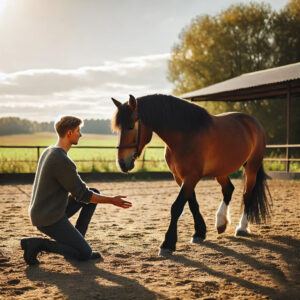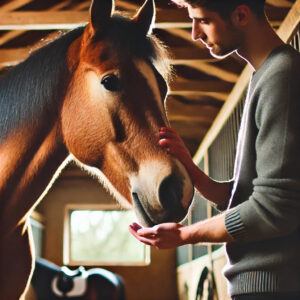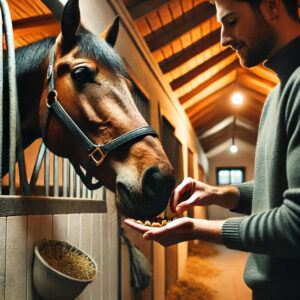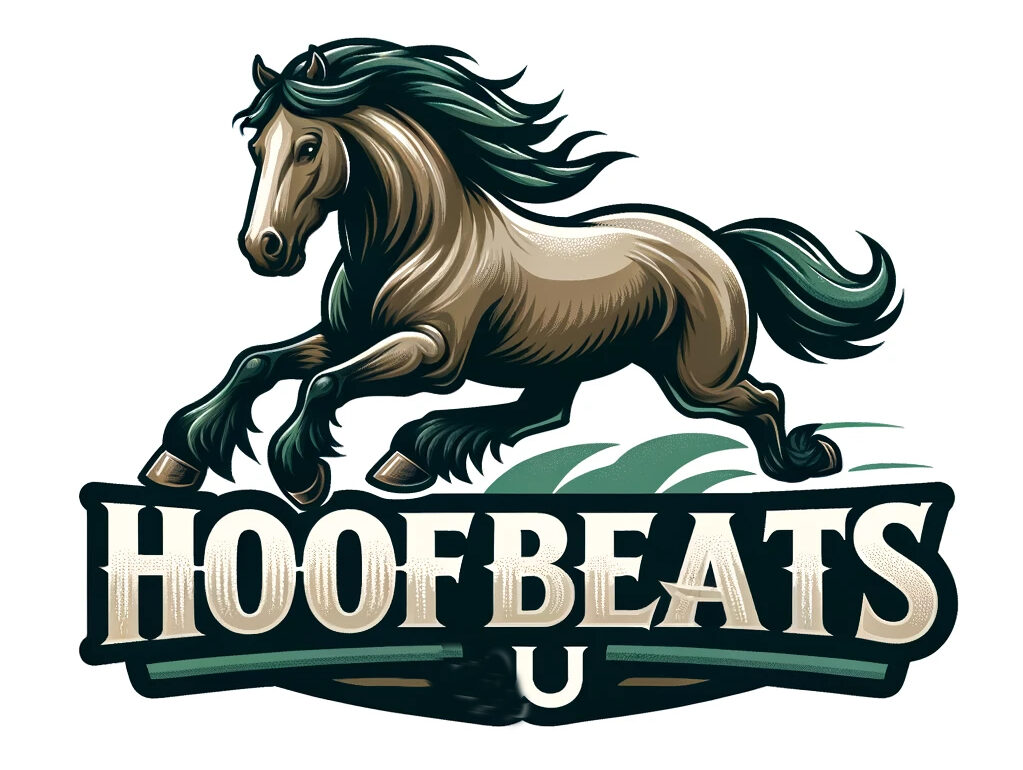
Trust between you and your horse goes beyond mere comfort. It’s about creating a mutual sense of security and respect. Trust is the bedrock of all healthy relationships, and it’s essential in your interactions with your horse.
Consistency plays a pivotal role in building trust. Horses, being creatures of habit, thrive on routine. By maintaining a consistent schedule and approach, your horse learns what to expect from you, reducing anxiety and strengthening the bond.
How can you tell if a horse trusts you? The signs can be subtle: a relaxed posture, a calm gaze, or even a nuzzle. Conversely, distrust might manifest as avoidance, skittishness, or aggression. Paying attention to these signals helps you understand where you stand in your horse’s eyes.
Building trust is foundational to every interaction you have with your horse. It paves the way for effective training, enjoyable riding, and a meaningful companionship. Trust is a journey you and your horse will take together, step by step.
The Path to Trust: Time and Patience

Patience is non-negotiable in building a lasting bond with your horse. Horses, like people, need time to adapt to new companions and environments. They’re sensitive creatures, and rushing the process might set you back.
Investing time in your relationship with your horse signals that you’re a consistent and reliable figure in their life. Whether through grooming, feeding, or just being present, time spent together is invaluable.
Don’t stress over immediate results. Trust-building is a dynamic process that involves reading your horse’s feedback and adjusting accordingly. Regular, non-demanding interaction forms the basis of a respectful partnership. Choose activities that are soothing and confidence-building to foster a sense of safety and security.
Setting a steady tempo early on is crucial. Interspersing training with periods of rest or gentle activities allows the horse to process and adjust. If your horse associates your presence with peace and positive experiences, trust will follow.
Communication Clarity: Understanding Equine Language

Horses communicate with us in myriad ways, often without making a sound. Their body language speaks volumes if you know what to look for. A flick of the ear, a swish of the tail, or a fixed gaze can reveal much about your horse’s feelings and thoughts.
Observing your horse’s ears is a good starting point: are they forward (alert and interested), sideways (relaxed), or pinned back (potential aggression)? The direction and movement of their ears, eyes, and nostrils can clue you in on their mood and focus. Wide eyes or flaring nostrils usually signify excitement or anxiety.
The positioning and movement of your horse’s head also carry meaning. A lowered head can indicate relaxation or submission, while a high head might signal alertness or resistance. Responding appropriately encourages mutual respect and improves trust.
Clear communication with your horse involves consistent cues and rewards. Horses thrive on consistent patterns of interaction. If you signal a command, reward accordingly, and your horse will start to associate your signals with positive outcomes.
Training Methods that Enhance Trust

The techniques you employ in training your horse significantly impact the trust between you. Positive reinforcement encourages your horse to associate training with pleasant outcomes. This could be in the shape of treats, praises, or a gentle pat, as opposed to punitive measures that can instill fear and damage trust.
Consistency in your approach is essential. Horses thrive on routine. Choose training methods that make sense to your horse and stick to them. This way, you’ll understand your horse’s learning patterns and how they respond to different situations.
Introduce new experiences and challenges gradually. Overwhelming your horse with too much too quickly can lead to fear. Instead, introduce new elements in a controlled and reassuring manner, ensuring the horse feels safe and supported.
Ending on a positive note reinforces good experiences. You can always adjust your approach if something isn’t working, as long as it promotes trust and learning.
Maintaining and Measuring the Trust Bond

You’ve invested time and effort into building a solid foundation of trust with your horse. Regular health checks and grooming are opportunities to strengthen your bond, showing your horse that you’re invested in their well-being.
Assessing the trust level involves observing behavioral signs that indicate a strong bond. Does your horse approach you willingly? Do they remain calm and responsive under various circumstances? These are the checkpoints that suggest a high level of trust.
If you encounter trust issues, review and adjust your approach. Trust can ebb and flow due to factors like health issues or environmental stressors. Seeking professional guidance from a veterinarian, equine behaviorist, or professional trainer can help restore shaken trust.
Your journey with your horse is ongoing. While trust is foundational, it requires continuous, attentive upkeep. Stay observant, be adaptable, and always choose methods that resonate with both you and your horse. The relationship you’re nurturing has the potential to become one of the most rewarding experiences of your life.

